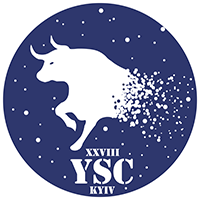Speaker
Description
Currently, an array of 3 telescopes are used to detect objects of the Kuiper belt.
In practice, this is identical to photometric observations of exoplanet transits, but there is a significant difference in the time of star occultation and the shape of the light curve.
This line of research is relatively new and relevant in the field of solar system astronomy. To successfully capture the light curve of a star during the passage of an asteroid over it, a high frequency of image capture is required. For a 1-kilometer body on
a distance of 40 astronomical units, the occulation time of the star is
160-260 ms if Fresnel diffraction is taken into account. Another field of observations with Colibri telescope aaray is exoplanet transits.
A simple approach is to follow TESS-detected exoplanet systems for longer periods of time on small ground-based telescopes. The idea is that if transit observations show
that the system has an exoplanet in a close orbit, then there is a probability that on
there are also planets in distant orbits, that is, longer periods. Long-term observations of TESS-detected exoplanets will also help clarify
their orbital characteristics for observational candidates for new
James Webb telescope

